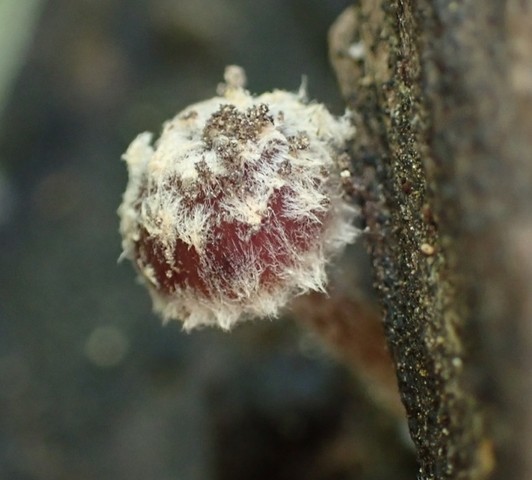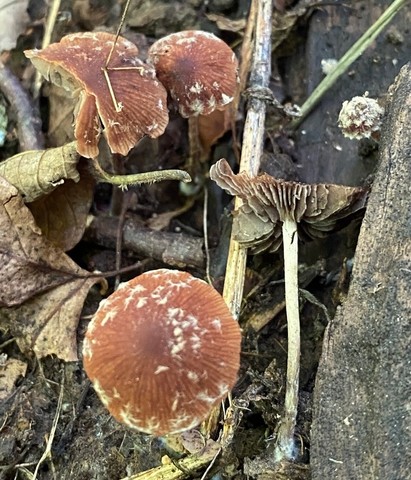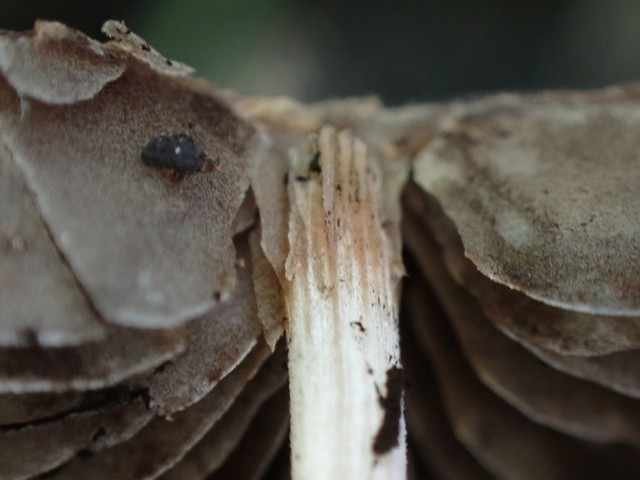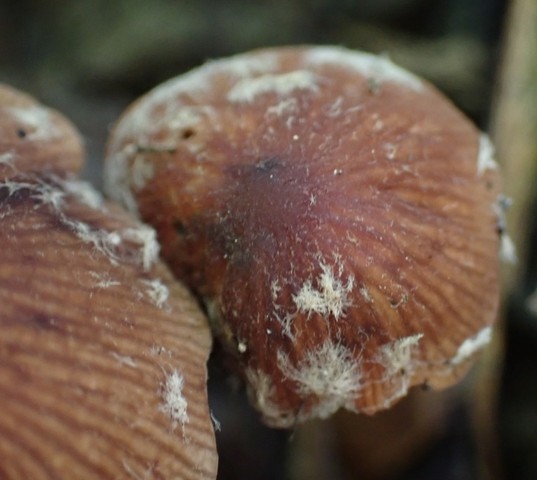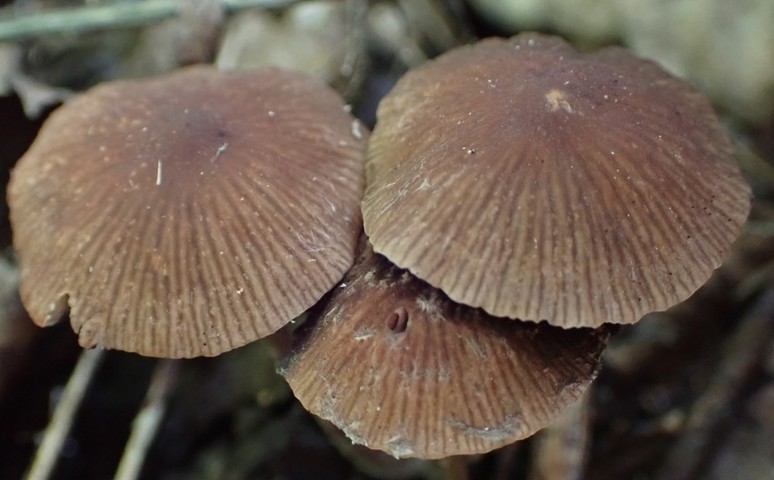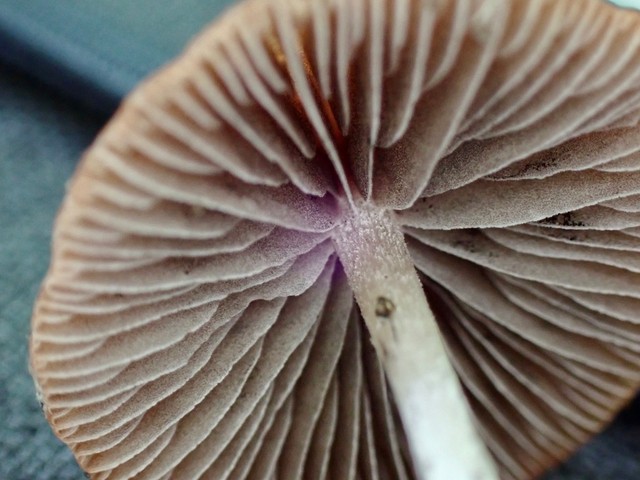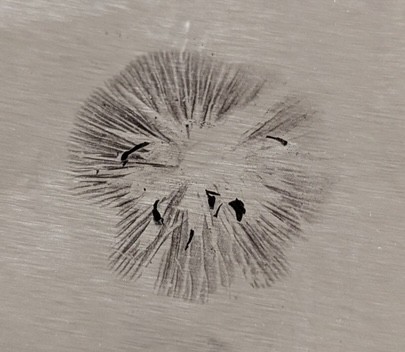Wooly Brittlestem
Psathyrella vinosofulva
Life > Fungi > Basidiomycota > Agaricomycotina > Agaricomycetes > Agaricomycetidae > Agaricales > Agaricineae > Psathyrellaceae > Psathyrella
The Wooly Brittlestem is an uncommon decomposer of woody debris and can be found in the spring and summer. It enjoys growing on soil amongst well-decomposed wood (especially ash), distributed (but uncommon) across the Northern Hemisphere. These specimens were found in a low, shaded woody area adjacent to a creek.
Psathyrella vinosofulva resembles the more common Maroon Brittlestem except for its cap color is brighter reddish to brownish, is more slender, and possesses a great deal more wooly velar tissue on the top of the cap. The cap is shaped evenly rounded, sometimes with a small umbo in the center ornamented with distinctive wool-like groups of fibers that wear off with age. The gills are attached to the stem and not crowded. The stem is exceptionally brittle with no annulus but sometimes wooly velar tissue at the base (similar to that on cap surface). It has a blackish spore print.
September 13th, 2023 Field Notes - Indian Cave State Park
- Growing from woodland duff/soil near rotting hardwood log in low, moist woodland draw.
- Caps purplish-brown with white scales when young, later turning brown and convex with a heavily striated margin.
- Lamellae adnexed, marginate (lighter edge), with frequent partial gills.
- Stipe equal, lighter colored near apex, with white basal mycelium.
- Spore Print: blackish
References
Kuo, M. (2011, January). The genus Psathyrella. Retrieved from the MushroomExpert.Com Web site: http://www.mushroomexpert.com/psathyrella.html
Psathyrella vinosofulva P.D. Orton, Transactions of the British Mycological Society 43 (2): 378 (1960) [MB#337699]
